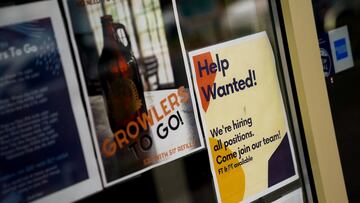ECONOMY
Which cities in the US have the lowest unemployment rate?
Newly released unemployment data can show us which metropolitan areas have the most people in work right now.

The US monthly jobs report data reveals the data behind the US economy, providing institutions the information necessary to carry out business. The latest data showed an increase in unemployment to 3.8 percent, the highest since February 2022.
This national average is, of course, not the same in every state. Each state and metropolitan area has its own particular set of circumstances which affect unemployment: the state of industry, education, demographics, and politics are just some of the factors involved.
Here is the data.
Metropolitan areas with the lowest unemployment rate
- Bismarck, North Dakota: 1.5%
- Fargo, North Dakota: 1.6%
- Baltimore-Columbia-Towson, Maryland: 1.8%
- Sioux Falls, South Dakota: 1.8%
- Burlington-South Burlington, Vermont: 1.8%
- Grand Island, Nebraska: 1.8%
- Lincoln, Nebraska: 1.8%
Baltimore-Columbia-Towson is the only one on that list with more than one million inhabitants.
What a jobs market means in macroeconomics
Despite a slowdown in new jobs, the data released by the Bureau of Labor Statistics shows that on the whole the employment market is strong. In the words of the Federal Reserve, it is tight; something they are aiming to break.
The Federal Reserve has not been liking their so-called tight jobs market. They have been aiming to get inflation back to 2% and a tight jobs market means workers in theory have more power to demand higher wages.
The Fed wants to stop this, the point of rising interest rates is to force companies to cut back and ultimately end with them letting staff go.
Though rates were not increased at the Fed’s last meeting in September, hanging around 5-5.25%, it is believed they could be pushed up once again at the next meeting on 1 November. This would almost certainly increase unemployment in the run-up to Christmas.






